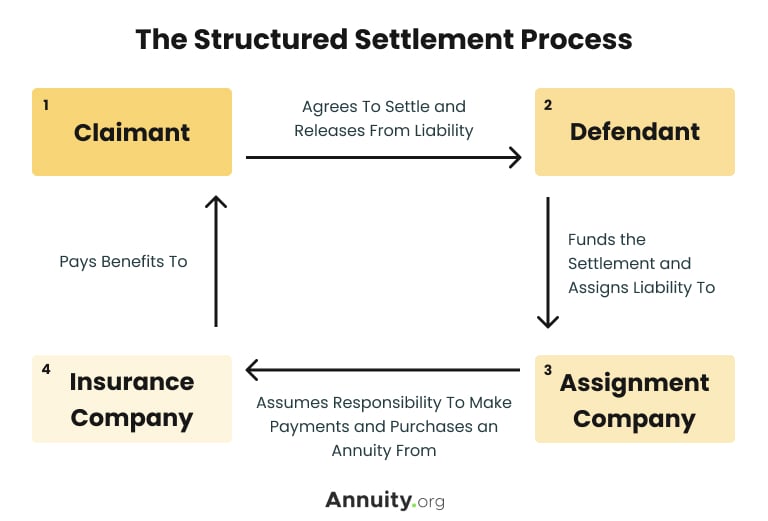Over 9.5 million Americans received disability benefits in 2022, according to the Social Security Administration. By 2025, this number is expected to grow significantly. As someone who’s witnessed the challenges of the disability settlement process firsthand, I’m eager to share insights on how this landscape is evolving.
Technological Advancements in Disability Settlement Processes
Technology is reshaping disability settlements in profound ways. By 2025, we’ll see major shifts in case assessment and record-keeping, aimed at making the process faster, more accurate, and more secure for everyone involved.
AI-driven tools are set to revolutionize how we evaluate disability claims. This isn’t about replacing human judgment, but enhancing it with data-driven insights. We’re entering an era where AI can analyze vast amounts of historical data to predict potential settlement outcomes. This capability will be a game-changer, helping both claimants and attorneys make more informed decisions.
A law firm in California recently implemented an AI-driven case assessment tool that analyzes thousands of past cases to predict potential settlement ranges for new claims. This tool helps attorneys provide more accurate initial consultations and set realistic expectations for clients. It’s a glimpse into the future of legal tech in disability settlements.
Virtual reality is another technology poised to transform how claimants present their cases. By 2025, VR technology will allow individuals to visually demonstrate the impact of their disability. Imagine being able to show a judge or jury exactly how your daily life is affected – it’s a powerful tool for building empathy and understanding.
Blockchain-Based Settlement Records
Blockchain technology is enhancing the security and transparency of disability settlement records. This advancement provides a tamper-proof system for storing and accessing critical information related to settlements.
By 2025, we’ll see blockchain-powered smart contracts facilitating automatic, timely disbursement of settlement funds. This innovation will reduce administrative overhead and potential delays in payment processing. It’s a win-win for both claimants and legal professionals, streamlining the often complex and time-consuming settlement process.
| Smart Contract Feature | Benefit |
|---|---|
| Automated Disbursement | Reduces payment delays |
| Multi-signature Approval | Enhances security |
| Real-time Auditing | Increases transparency |
| Conditional Execution | Ensures compliance with settlement terms |
These advancements aren’t just theoretical – they’re already being implemented in various forms. For instance, some law firms are experimenting with blockchain for secure document storage and smart contracts for automated settlement payouts. It’s an exciting time in the field, and we’re just scratching the surface of what’s possible.
Socioeconomic Factors Influencing Disability Settlements
The socioeconomic landscape is rapidly changing, and this shift will significantly impact how we approach and value disability settlements in 2025. We need to consider new work paradigms and growing economic disparities.
Gig Economy Considerations
The rise of the gig economy is reshaping how we calculate lost wages and future earning potential in disability settlements. By 2025, we’ll need new approaches to account for these non-traditional work arrangements.
Nationwide, the average workers’ comp settlement is $41,757, according to data released in 2023 by the National Safety Council (NSC). But how does this apply to gig workers? It’s a question we’re grappling with as the nature of work evolves.
As remote work and flexible schedules become more prevalent, settlements will need to account for these changes. This shift may affect how we assess a claimant’s ability to work and the accommodations required. I recently worked on a case where a software developer with a mobility disability received a settlement that included funding for an advanced home office setup, allowing them to continue working remotely for their employer with proper accommodations.
Economic Inequality and Settlement Disparities
Growing economic disparities may lead to increased scrutiny of settlement amounts based on socioeconomic factors. We’ll need to address potential biases in our calculations to ensure fair outcomes for all claimants.
By 2025, we’ll see more legal and social initiatives emerging to address potential biases in settlement calculations. These efforts will aim to promote more equitable outcomes across different demographic groups. It’s a complex issue, but one that’s crucial for ensuring justice in our evolving economic landscape.
The U.S. Department of Housing and Urban Development recently announced a settlement agreement with the City and County of Denver to resolve disability discrimination claims. This kind of action sets a precedent for addressing disparities and promoting fairness in disability-related settlements.

Source: air.org
This image starkly illustrates the wage gap faced by individuals with disabilities. It’s a sobering reminder of why we need to be vigilant about fairness in disability settlements.
Long-Term Disability Settlement Strategies
Long-term disability settlement strategies in 2025 will require more sophisticated planning. We’ll need to address evolving healthcare costs and life expectancy projections to ensure comprehensive coverage for claimants.
Personalized Healthcare Cost Projections
Advanced data analytics will enable more accurate, individualized projections of future medical expenses for long-term disability claimants. This precision will help ensure settlements adequately cover anticipated healthcare needs.
We’re also seeing increased recognition of mental health issues in long-term disability settlements. By 2025, this shift will lead to more comprehensive coverage, addressing both physical and psychological needs. It’s a welcome change that acknowledges the full spectrum of challenges faced by individuals with disabilities.
Structured Settlements with Flexible Options
Long term disability settlement options will increasingly offer hybrid structured settlement options. These will provide both stability and flexibility to adapt to changing needs over time.
Some structured settlements may even incorporate cryptocurrency-backed annuities by 2025. This innovation could offer potential for growth while managing volatility risks. It’s a cutting-edge approach that reflects the changing nature of our financial landscape.

Source: annuity.org
This image provides a clear overview of how structured settlements work. As we move towards more flexible options, understanding these basics becomes even more crucial.
Impact of Lump Sum Settlements on Social Security Disability
Understanding how a lump sum settlement affects social security disability benefits will be crucial in 2025. We’ll need to navigate this complex relationship to ensure optimal outcomes for claimants.
In 2022, there were 9,005,142 disabled worker beneficiaries receiving Social Security Disability Insurance benefits. That’s a significant number of people potentially affected by the interplay between lump sum settlements and ongoing benefits.
Offset Calculations in a Digital Age
Advanced software tools will streamline the process of calculating how lump sum settlements affect ongoing Social Security Disability payments. This technology will help us make more informed decisions about settlement structures.
By 2025, claimants will have access to interactive tools that simulate the impact of different settlement scenarios on their Social Security Disability benefits. This technology will empower individuals to make more informed decisions. I recently used a VR-based financial planning tool with a client to visualize how different lump sum settlement amounts would affect their long-term Social Security Disability benefits. It was an eye-opening experience that helped them choose the most beneficial option for their unique situation.
Strategic Timing of Settlements
The timing of lump sum settlements will become increasingly critical in maximizing overall benefits when considering Social Security Disability implications. We’ll need to develop sophisticated strategies to optimize outcomes.
Legal professionals will develop more sophisticated strategies to time disability settlements in conjunction with Social Security Disability Insurance applications. This coordination will be crucial for achieving optimal outcomes. It’s a complex dance, but one that can significantly impact a claimant’s long-term financial stability.
Globalization and Cross-Border Disability Settlements
As our world becomes more interconnected, disability settlements will need to address the complexities of international work arrangements and varying disability laws across countries. This global perspective will be crucial in 2025.
Harmonization of International Disability Standards
Efforts to create more uniform global disability assessment criteria will impact how we calculate settlements for individuals who have worked in multiple countries. This standardization will help ensure fairness across borders.
Settlement agreements will incorporate sophisticated mechanisms to protect claimants from currency exchange rate volatilities, especially for long-term payouts. This protection will be crucial in an increasingly global economy.
The rise of international telehealth services will influence how we evaluate and monitor disabilities for settlement purposes across different jurisdictions. This technology will enable more comprehensive global assessments. I recently worked on a case where we used a secure, blockchain-based platform for international telehealth consultations to assess a client who had worked in multiple countries. It was a game-changer in terms of getting a comprehensive, global perspective on their condition.
Multinational Corporation Liability
Navigating settlements for disabilities acquired while working for multinational corporations will require intricate understanding of global corporate structures and international liability laws.
International disability rights movements will significantly influence settlement practices, pushing for more comprehensive and equitable standards worldwide. It’s an exciting development that has the potential to improve outcomes for claimants across the globe.
Environmental Factors in Disability Settlements
Environmental impacts on health will play an increasingly significant role in disability settlements, particularly for cases involving long-term exposure or climate-related incidents.
Climate Change-Related Disabilities
Settlements will need to account for disabilities stemming from extreme weather events, air pollution, and other climate change-related factors. This emerging area will demand innovative approaches to assessment and compensation.
Advanced environmental health models will project the long-term effects of environmental factors on disabilities. These models will inform settlement calculations by providing more accurate long-term prognoses. It’s a complex field, but one that’s becoming increasingly important as we grapple with the health impacts of climate change.
Toxic Exposure Settlements in the Age of Big Data
Big data analytics will transform the evaluation and settlement of toxic exposure cases. This technology will enable more precise causation analysis and long-term impact assessment, leading to fairer settlements.
Data from personal health monitoring devices will become pivotal evidence in disability cases related to environmental factors. This information will provide detailed exposure and health impact data to support claims. I recently worked on a case where data from a client’s wearable device provided crucial evidence of their exposure to harmful environmental factors. It’s a powerful tool that’s changing how we approach these complex cases.

Source: who.int
This image illustrates the complex process of health impact assessments. As we deal with more environmentally-related disability cases, understanding these processes becomes crucial.
At Ultra Law, we’re committed to staying ahead of these evolving trends in disability settlements. Our team continuously updates our knowledge and tools to provide you with cutting-edge representation. We understand the complexities of this changing landscape and are here to guide you through it.
Whether you’re dealing with a tech-driven assessment, grappling with the implications of the gig economy on your claim, or facing a complex international case, we’re equipped to handle it. We’re not just your legal representatives; we’re your partners in securing the settlement you deserve.
Don’t let these changes overwhelm you. Reach out to Ultra Law for a consultation. Together, we’ll develop a strategy that addresses your unique situation and maximizes your settlement in this new era of disability law.
Key Learnings Recap
- Technological advancements, including AI and blockchain, are reshaping disability settlement processes.
- Socioeconomic shifts, particularly the gig economy, necessitate new approaches to calculating settlements.
- Long-term disability settlements require sophisticated planning to address evolving healthcare costs and life expectancy projections.
- The impact of lump sum settlements on Social Security Disability benefits is becoming increasingly complex.
- Globalization is creating new challenges in cross-border disability settlements.
- Environmental factors, including climate change, are playing a growing role in disability cases.
- Big data and wearable technology are transforming how we approach toxic exposure settlements.




